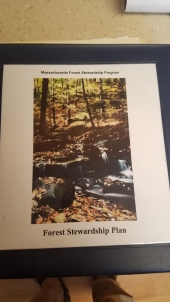posted 8 years ago
I like the idea of gradual transition from a forested slope to a managed food forest. Selectively taking out trees a few at a time, and replacing them with species that you select could be a multi-year project, but one that continues to maintain the structural integrity of the hillside (against erosion) and continues to capture energy and build soil.
As you remove selected trees, pile that bio-mass up below the trees you intend to keep. In that way, you make a kind of terrace that will capture leaves and other organic material, and create a habitat for soil biota. Western or Southern facing hillsides absorb much more sunlight and heat than a flat surface. They warm up earlier in the spring and maintain a longer growing season into the fall. So by piling-up old tree trunks and branches below the trees you mitigate some of that solar irradiation that would be baking the soil on the sunny side of the tree, and you keep that soil moist and cool far longer into the growing season. Eventually, you'll have a rotting brush pile below every one of the trees you intend to keep. All that fertility will SLOWLY cascade down the hillside in the years to come.
Above the trees you intend to keep (or the new ones you plant) if you dig a small swale, you will capture moisture and move it into the soil profile right where the tree needs it. Permaculturalists talk of creating a "lens" of water that infiltrates into the soil at the swale and then spreads out throughout the tree's root zone as its pulled by gravity down the hillside and through the soil profile. If you need to provide additional water to the trees as they are established, you simply run the hose over and fill up the swale. That puts the water right where its needed—a couple of feet above the tree. In the years to come, the swale will slowly fill with organic matter that rots down, and like the mulch pile below the tree, it will cascade that fertility down the hillside, first to the tree immediately below, and then down to the rest of the forest below.
You didn't provide many details about the steepness of the slope or what shape the soil is in, but these two techniques (brush piles below your trees and swales above them) generally work regardless of the gradient or climate. Its always about building soil, capturing water, and capturing energy (sunlight).
Finally, as you open the canopy and more sunlight can get through to the ground below, you can plant vining crops, cover crops, herbaceous perennials (you mentioned blue berries) and other food crops in the newly created gaps and spaces. Think of it as creating micro-beds. I do this all the time on my hillside. I'll get a couple of big branches or a tree trunk, pile them up and make a small terrace, and then plant in the little fish-scale bed I created. I just did that last weekend, transplanting a couple of pups from an artichoke. Its not a big space, but there is full sunlight that makes it through to the ground right there for about 10 hours a day. Up until last week, that was wasted energy. Now its a fertile little spot. Two more mature artichoke plants will give me upwards of 75 or 100 more artichokes a season (in addition to the 5 or so plants we've already got growing elsewhere)—way more than we can use, but friends and family always loves getting a big bag of 10 big artichokes as a gift.
I do this regularly, and then plant stuff like goji berries, moringa (which I keep short so that I can easily harvest it), rhubarb (ignore it and it seems to do just fine), and the ever invasive sweet potato (which now just comes up wherever it wants on the hillside). The key is keeping all that biomass on the hillside and letting it slowly decompose around your micro-beds. Papaya, pumpkins, gourds, and even tomatoes are also good choices to drop into those little sunny spaces within the forest. Cherry tomatoes self-seed and will continue to come up for years. Papaya are easy to chop and drop after a year or two. Pumpkins and gourds just look cool as they sit out there as summer turns to fall.
If you made it a goal to create one little bed like that every weekend, in 2 years you'd be amazed with how much additional productivity you are getting off that hillside. Next weekend, cut down another couple of junk weed trees, lay that mulch down to form a bed, shape it and plant something new in that space, and walk away.
Once you've got your hillside appropriately thinned and the food forest integrated within (apples, figs, cherries, avocados, whatever), its not too difficult to maintain. Cover crop it with a nitrogen fixing cover crop mix in spring or fall (or both). Continue to keep every last leaf of biomass on the property. Have any men in your life pee in your swales to keep that nitrogen in the system and feed the trees (you may need to create some sort of moveable screen to facilitate this).
Inch by inch, life's a synch. Do it a bit at a time. Best of luck.
"The rule of no realm is mine. But all worthy things that are in peril as the world now stands, these are my care. And for my part, I shall not wholly fail in my task if anything that passes through this night can still grow fairer or bear fruit and flower again in days to come. For I too am a steward. Did you not know?" Gandolf






















 5
5








 3
3




 1
1





















